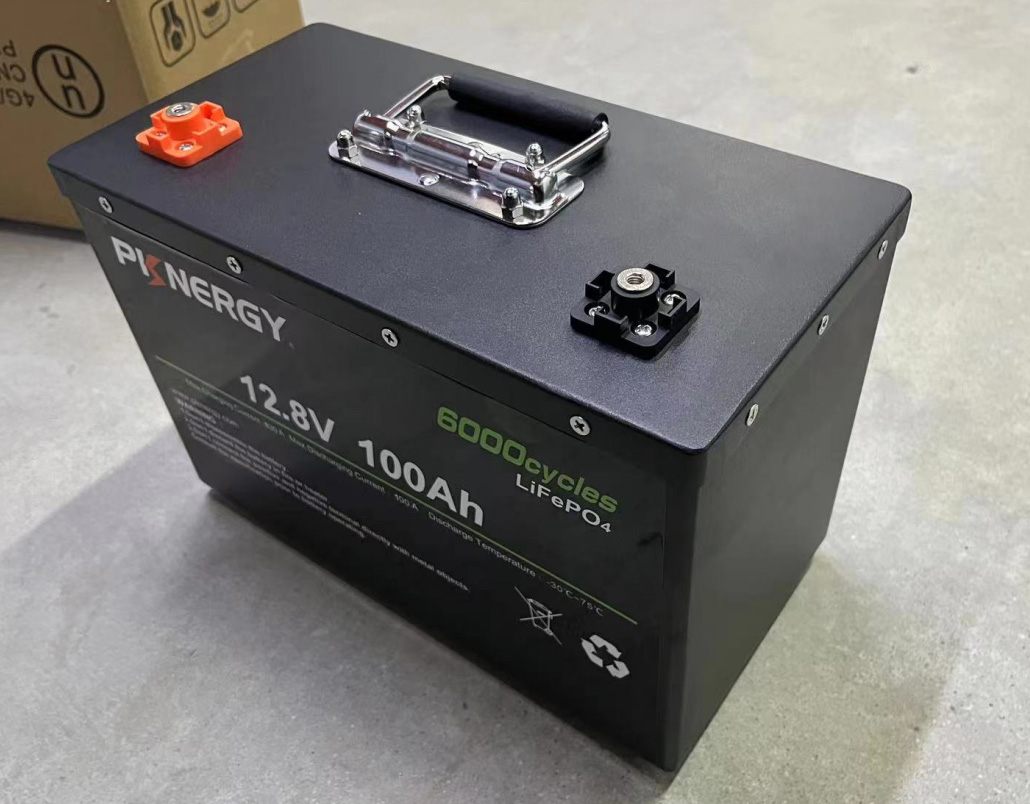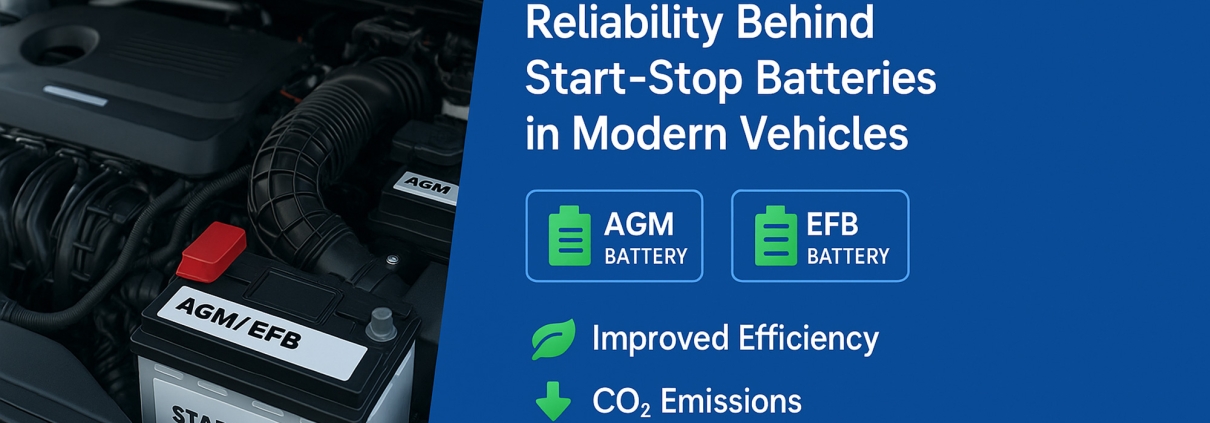The Science and Reliability Behind Start-Stop Batteries in Modern Vehicles
🚗 How EFB and AGM Batteries Power Efficiency, Reliability, and Sustainability
In today’s automotive landscape, where efficiency, emission control, and sustainability are key priorities, the start-stop system has become an essential innovation. At its core lies the start-stop battery — a power source designed to handle frequent charge and discharge cycles while maintaining performance stability and durability.
⚙️ Understanding Start-Stop Technology
Start-stop systems automatically shut down a vehicle’s engine when it comes to a complete stop — such as at traffic lights or in heavy traffic — and restart it when the driver releases the brake or clutch. This reduces both fuel consumption and CO₂ emissions, benefiting the environment and reducing operating costs.
However, this frequent start-stop cycling puts immense strain on conventional lead-acid batteries. To address this, two advanced types were developed for modern vehicles: Enhanced Flooded Batteries (EFB) and Absorbent Glass Mat (AGM) batteries.
🔋 Key Characteristics of Start-Stop Batteries
- 🔁 High Cycle Life: Capable of thousands of charge/discharge cycles without capacity loss.
- ⚡ Fast Charge Acceptance: Absorbs high charging current during short braking phases.
- 🔥 Low Internal Resistance: Ensures efficient energy transfer and reliable cranking under load.
- 🧱 Enhanced Durability: Built with reinforced plates and improved electrolyte design to resist vibration and heat.
🔧 Types of Start-Stop Batteries
1️⃣ EFB (Enhanced Flooded Battery)
Designed for entry-level start-stop systems, the EFB battery delivers better cycling performance and stability than conventional flooded batteries — making it ideal for compact cars and light vehicles.
2️⃣ AGM (Absorbent Glass Mat) Battery
The AGM battery is used in advanced start-stop and micro-hybrid systems. It provides:
- ⚙️ Deep-cycle performance and rapid recharge
- 💧 Maintenance-free sealed design
- 🧠 High power for vehicles with advanced electronics and energy recovery systems
🔍 Why Choosing the Right Battery Matters
Using the wrong battery type can cause system errors, reduced efficiency, or electronic malfunctions. Vehicles equipped with energy recovery systems or heavy electrical loads perform best with AGM batteries, while standard start-stop models can use EFBs.
Proper selection ensures longer battery life, fewer breakdowns, and consistent system operation.
🧰 Maintenance & Performance Tips
- 🔌 Verify alternator voltage and vehicle charging system regularly.
- 🔋 Avoid deep discharge cycles beyond rated limits.
- 🧽 Keep terminals clean and corrosion-free.
- ⚙️ When replacing, reset the vehicle’s BMS (Battery Management System) to ensure accurate calibration.
🌱 Environmental & Economic Benefits
Start-stop batteries help cut idle emissions, save fuel, and extend engine life. Their longer service life also reduces waste and replacement frequency, supporting sustainable mobility goals.
🚀 Future Outlook
As automotive electrification continues, start-stop technology bridges traditional and hybrid systems. Future improvements in plate materials and electrolyte design will further enhance performance, reliability, and sustainability.
✅ Conclusion
The start-stop battery embodies the perfect balance between efficiency, durability, and eco-conscious engineering — a true foundation for modern automotive sustainability. PKNERGY continues to innovate across battery technologies that drive cleaner, smarter mobility solutions.
👉 Contact PKNERGY today to learn how our automotive and energy storage batteries can enhance performance, reliability, and energy savings for your next-generation vehicles.
📩 Contact Information
Cassie | PKNERGY Energy Co., Ltd.
Email: sale4@pknergy.com
WhatsApp/Tel: +86 13974604556
🌐 Website: https://pknergypower.com





